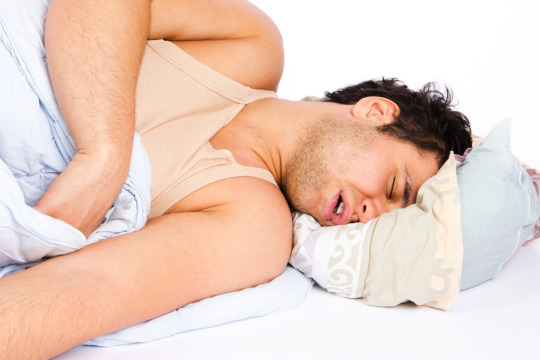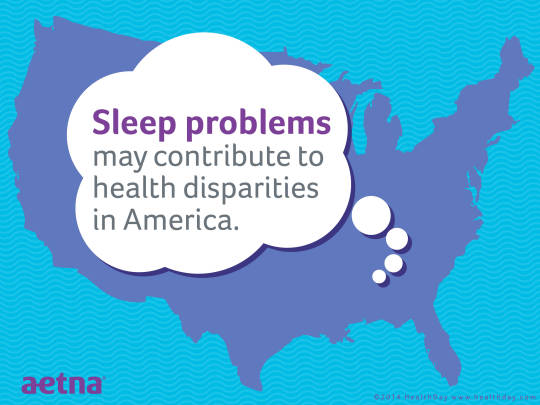How to Travel with Travel CPAP Machine prepare for flight with your travel cpap travel cpap Continue Reading….
Don't wanna be here? Send us removal request.
Photo

ferstoneray turned 5 today!
happy birthday dear
0 notes
Text
NDA AND NAVAL DEFENCE ACADEMY
1. Algebra
The concept of a set, procedures on sets, Venn layouts. De Morgan laws. Cartesian product, relation, equivalence connection. Read More Representation of real figures on a line. Complicated numbers - basic qualities, modulus, argument, cube origins of unity. Binary program of numbers. Conversion associated with the number in decimal system to binary program and vice-versa. Arithmetic, Geometric and Harmonic progressions. Quadratic equations with real coefficients. A solution of linear inequations of two variables simply by graphs. Permutation and Mixture. Binomial theorem and the application. Logarithms and their own applications. second. Matrices plus Determinants Forms of matrices, procedures on matrices Determinant associated with a matrix, basic qualities of the determinant. Adjoint plus inverse of a sq . matrix, Applications - Answer of a system associated with linear equations in 2 or three unknowns simply by Cramers rule and simply by Matrix Method. 3. Trigonometry Angles and their steps in degrees and within radians. Trigonometrical ratios. Trigonometric identities Sum and distinction formulae. Multiple and Sub-multiple angles. Inverse trigonometric features. Applications - Height plus distance, properties of triangles. 4. Analytical Geometry associated with two and three sizes Rectangular Cartesian Coordinate program. Distance formula. Equation associated with a line in the variety of forms. The position between two lines. The range of a point through a line. Equation associated with the circle in regular and general form. Regular types of the parabola, ellipse plus hyperbola. Eccentricity and axis of the conic. Stage in a 3d area, the distance between two factors. Direction Cosines and path ratios. The equation of the particular plane and a collection in a variety associated with forms. The angle between 2 lines and angle among two planes. Equation associated with the sphere. 5. Gear Calculus The concept of the real-valued function -- domain, range and chart of a function. Amalgamated functions, one to 1, onto and inverse features. Notion of limit, Regular limits - examples. Continuity of functions - good examples, algebraic operations on constant functions. Derivative of the function in a stage, geometrical and physical interpretation of a derivative -- applications. Derivatives of the amount, product and quotient associated with functions, a derivative of the function with respect associated with another function, derivative associated with a composite function. 2nd order derivatives. Increasing plus decreasing functions. The application associated with derivatives in problems associated with maxima and minima. six. Integral Calculus and Gear equations Integration as inverse of differentiation, integration simply by substitution and by components, standard integrals involving algebraic expressions, trigonometric, exponential plus hyperbolic functions. Evaluation associated with definite integrals - dedication of areas of aircraft regions bounded by the figure - applications. Definition associated with order and degree associated with a differential equation, development of a differential formula by examples. General plus the particular solution of the differential equation, solution associated with the first order and 1st-degree differential equations associated with various types - good examples. Application in problems associated with growth and decay. seven. Vector Algebra Vectors within two and three sizes, magnitude and direction associated with a vector. Unit plus null vectors, addition associated with vectors, scalar multiplication associated with the vector, scalar product or even dot product of two vectors. Vector product and mix product of two vectors. Applications-work did with the force and moment associated with the force and within geometrical problems. 8. Data and Possibility Statistics Category of data, Frequency submission, cumulative frequency distribution -- examples Graphical representation -- Histogram, Pie Chart, Rate of recurrence Polygon - examples. Steps of Central tendency -- mean, median and setting. Variance and standard change - determination and assessment. Correlation and regression. Possibility Random experiment, outcomes plus associated sample space, occasions, mutually exclusive and thorough events, impossible and particular events. Union and Intersection of events. Complementary, primary and composite events. Description of probability - traditional and statistical - good examples. Elementary theorems on the possibility - simple problems. Conditional probability, Bayes theorem -- simple problems. Random adjustable as a function on the particular sample space. Binomial submission, examples of random tests giving rise to Binominal distribution. Paper II COMMON ABILITY TEST Part The - ENGLISH
The query paper in English will certainly be designed to check the candidates understanding associated with English and workman such as utilisation of words. The syllabus covers various aspects such as Grammar and usage, language, comprehension and cohesion within extended text to check the candidate's proficiency within English.
Part B -- GENERAL UNDERSTANDING
The query paper on General Understanding will broadly cover the particular subjects Physics, Chemistry, Common Science, Social Studies, Location and Current Events. The particular syllabus given below will be designed to indicate the particular scope of these topics included in this papers. The topics mentioned are certainly not to be regarded because exhaustive and questions on topics of similar character not specifically mentioned in the syllabus can furthermore be asked. Candidates solutions are likely to show their own knowledge and intelligent knowing of the subject. Area A (Physics) Physical Qualities and States of Issue, Mass, Weight, Volume, Denseness and Specific Gravity, Theory of Archimedes, Pressure Measure. The motion of objects, Speed and Acceleration, Newton's Laws and regulations of Motion, Force plus Momentum, Parallelogram of Causes, Stability and Equilibrium associated with bodies, Gravitation, elementary suggestions of work, Power plus Energy. Effects of Warmth, Measurement of temperature plus heat, change of Condition and Latent Heat, Settings of transference of Warmth. Sound waves and their own properties, Simple musical devices. Rectilinear propagation of Gentle, Reflection and refraction. Circular mirrors and Lenses. Human being Eye. Natural and Synthetic Magnets, Properties of the Magnet, Earth like a Magnets. Static and Current Electrical power, conductors and nonconductors, Ohms Law, Simple Electrical Circuits, Heating, Lighting and Magnet effects of Current, Dimension of Electrical Power, Main and Secondary Cells, Make use of X-Rays.
0 notes
Photo

Study finds that sleep apnea and Alzheimer’s are linked
A new study looking at sleep-disordered breathing (SDB) and markers for Alzheimer’s disease (AD) risk in cerebrospinal fluid (CSF) and neuroimaging adds to the growing body of research linking the two.
But this latest study also poses an interesting question: Could AD in its “preclinical stages” also lead to SDB and explain the increased prevalence of SDB in the elderly?
The study will be presented at the ATS 2013 International Conference.
“It’s really a chicken and egg story,” said Ricardo S. Osorio, MD, a research assistant professor at NYU School of Medicine who led the study. “Our study did not determine the direction of the causality, and, in fact, didn’t uncover a significant association between the two, until we broke out the data on lean and obese patients.”
When the researchers did consider body mass, they found that lean patients (defined as having a body mass index <25) with SDB did possess several specific and non-specific biomarkers of AD risk (increased P-Tau and T-Tau in CSF, hippocampal atrophy using structural MRI, and glucose hypometabolism using FDG-PET in several AD-vulnerable regions). Among obese patients (BMI >25), glucose hypometabolism was also found in the medial temporal lobe, but was not significant in other AD-vulnerable regions.
“We know that about 10 to 20 percent of middle-aged adults in the United States have SDB [defined as an apnea-hypopnea index greater than 5] and that the number jumps dramatically in those over the age of 65,” said Dr. Osorio, noting that studies put the percentage of people over the age of 65 with SDB between 30 and 60 percent. “We don’t know why it becomes so prevalent, but one factor may be that some of these patients are in the earliest preclinical stages of AD.”
According to Dr. Osorio, the biochemical harbingers of AD are present 15 to 20 years before any of its currently recognized symptoms become apparent.
The NYU study enrolled 68 cognitively normal elderly patients (mean age 71.4±5.6, range 64-87) who underwent two nights of home monitoring for SDB and were tested for at least one diagnostic indicator of AD. The researchers looked at P-Tau, T-Tau and Aβ42 in CSF, FDG-PET (to measure glucose metabolism), Pittsburgh compound B (PiB) PET to measure amyloid load, and/or structural MRI to measure hippocampal volume. Reduced glucose metabolism in AD-vulnerable regions, decreased hippocampal volume, changes in P-Tau, T-Tau and Aβ42, and increased binding of PiB-PET are recognized as markers of risk for AD and have been reported to be abnormal in healthy subjects before the disease onset.
Biomarkers for AD risk were found only among lean study participants with SDB. These patients showed a linear association between the severity of SDB and CSF levels of the biomarker P-Tau (F = 5.83, t=2.41, β=0.47; p< 0.05) and between SDB and glucose hypometabolism using FDG-PET, in the medial temporal lobe (F=6.34, t=-2.52, β=-0.57,p<0.05), the posterior cingulate cortex/precuneus (F=11.62, t=-3.41, β=-0.69, p<0.01) and a composite score of all AD-vulnerable regions (F=4.48, t=-2.11, β=-0.51, p<0.05). Lean SDB patients also showed smaller hippocampi when compared to lean controls (F=4.2, p<0.05), but no differences were found in measures of amyloid burden such as decreased Aβ42 in CSF or PiB positive scans.
Dr. Osorio and his colleagues are planning to test their hypothesis that very early stage preclinical AD brain injury that associates with these biomarkers can lead to SDB. They have proposed a two-year longitudinal study that would enroll 200 cognitively normal subjects, include AD biomarkers and treat those patients with moderate to severe SDB with continuous positive airway pressure, or CPAP, over time.
The purpose of the new study would be to determine the “direction” of causality between SDB and preclinical AD in elderly patients. After an initial assessment, the patients would be given CPAP to treat their sleep apnea. After six months, they would be evaluated again for biomarker evidence of AD.
“If the biomarkers change, it may indicate that SDB is causing AD,” explained Dr. Osorio. “If they don’t change, the probable conclusion is that these patients are going to develop AD with or without CPAP, and that AD may either be causing the apneas or may simply coexist with SDB as part of aging.”
Either way, Dr. Osorio believes the relationship between SDB and AD deserves further study.
“Sleep apnea skyrockets in the elderly, and this fact hasn’t been given the attention it deserves by the sleep world or the Alzheimer’s world,” Dr. Osorio said. “Sleep particularly suffers from an outmoded perception that it is an inactive physiological process, when, in reality, it is a very active part of the day for the brain.”
69 notes
·
View notes
Photo

Undiagnosed sleep disorders, including sleep apnea, are common among older U.S. adults, especially among certain minority groups, a new study finds.
Keep reading
286 notes
·
View notes
Text
Travel easy withTravel CPAP machine in sleep apnea.
Suffering with sleep apnea may affect our travel plans but with the help of travel CPAP machine travelling has become much more easy and convenient for sleep apnea patients.
After busy schedule of your daily life, back to back work makes your mind and body completely exhausted. You crave to be able to spend more time out of your busy schedule with family and friends. The best thing is to take a break and go outdoor somewhere in peace or where you can enjoy your heart out with your loved ones.
The only problem is that you have sleep apnea and worry to carry along your heavy & bulky CPAP machine because as much as you crave to spend some time out, breathing completely is your first priority and necessity. You have no option left to choose between the two.
Well, you might be please to know that a travel cpap portable machine or portable cpap machine makes your outing enjoyable, thus dealing with you sleep apnea. Whether you are travelling in airplane or camping in remote area you can carry your travel cpap portable machine along without worrying about that heavy and bulky equipment.
A travel cpap machine is designed for ultimate portability. These device are designed with travel in mind for the convenience of the patients who lure to go out somewhere for adventures, yet they are not solely for travel and can be used anywhere even at home.
A travel cpap machine is lightweight, portable and carry to use. It is approximately 6-8 inches and weighs approx. 1 pound.
The travel CPAP machine’s multi-night battery weighs around 1-2 pounds.
The multi-night battery lasts between 14-16 hours per charge making it perfect for 2-3 night trip.
This battery pack also comes with multiple adapters. Not only this, there is even an optional solar charger to charge your batteries to fill in just 6-12 hours normally, the charging time may vary and depends on your batteries.
How to use Travel CPAP
All the model of PAP devices, including BiPAP, APAP CPAP can be used on daily basis. The newer models are light weighted and portable yet powerful enough to be used constantly.
Travel CPAP machine preparation before traveling.
Before packing up your travel CPAP machines along make sure you empty the humidifiers water tank first. Even a couple of drops left in the humidifiers chambers can cause damage to machines.
While travelling through airways, make sure you accompany the travel cpap device through security and stay with security agents, so that you can keep a check on how carefully they are handling your machine. Make sure you double check your documents related to travel cpap machines which are required during security checks.
Every airline has their own rules and norms regarding handling with travel cpap devices. There for enquiring with the airlines in advance, whether they will allow carrying your travel cpap machine along with in plane is always a smart move.
Its always advisable to carry your medical alert card with you while you are travelling. You may even make the person travelling with you to carry a medical alert card; in case if there is any emergency he/she can inform to emergency personal that you suffer from sleep apnea and using the CPAP machine.
Essential items which need to be packed with travel cpap machine when travelling.
Always carry a back-up mask and spare items you never know when your items get misplaced or left behind, when you are travelling. Therefore, keeping backup will ensure that you are never out with your equipment.
Sleep therapy should be used regularly, even you are on vacations. Carrying a battery back-up is always helpful. Because some times in the event of the onboard power is interrupted.
j�
1 note
·
View note
